Building Water and Energy Security in the GCC through an Integrated Policy Approach

Table of Contents
Author(s)
Share this Publication
- Print This Publication
- Cite This Publication Copy Citation
Osamah Alsayegh, "Building Water and Energy Security in the GCC through an Integrated Policy Approach" (Houston: Rice University’s Baker Institute for Public Policy, January 20, 2023), https://doi.org/10.25613/G7YH-F695.
Introduction
The Gulf Cooperation Council (GCC) countries — Bahrain, Kuwait, Oman, Qatar, Saudi Arabia and the United Arab Emirates — are among the world’s richest in oil and gas resources, but the poorest in terms of freshwater. The majority of these countries depend on their hydrocarbon resources to fuel their economies and produce necessities like potable water through seawater desalination. In fact, all GCC states are currently prioritizing energy and water security to assure the sustainability and reliability of access and productivity under normal and emergency circumstances. Energy and water are not only economic and developmental variables for GCC countries, they are also essential for national security and an urgent strategic necessity. Furthermore, energy and water resources play a key role in international relations involving both conflictive and cooperative interactions. Cooperation among the GCC states on these issues is therefore critical.
Given the differences in their domestic interests, hydrocarbon reserves, and geographic locations, each GCC state has its own strategy and vision for tackling energy and water challenges. However, a more integrated approach among member states would help to bolster the region’s resilience. In fact, the GCC has outlined a vision for policy integration in its charter. According to the charter, the GCC’s objectives are: “To effect coordination, integration and inter-connection between Member States in all fields in order to achieve unity between them … To stimulate scientific and technological progress in the fields of industry, mining, agriculture, water and animal resources.”[1] Yet, the GCC Charter has not been fully exercised, particularly on pressing issues like energy and water security.
This brief discusses the energy and water challenges in the GCC and recommends an integrated regional policy for supporting and maintaining energy and water security. The proposed policy involves adopting a strategy to establish gas and water interconnection networks among GCC member countries, as well as supporting the existing power grid interconnection in the region. Kuwait’s energy and water dilemmas are used as a case study to examine how an integrated policy would minimize barriers and maintain security on the national and regional levels.
Kuwait’s Shortage of Domestic Natural Gas Supply
Resource-wise, Kuwait has relatively abundant energy reserves, given its small area size (17,820 km2) and population (4.3 million by 2022). It holds about 6.0% of the world’s proven crude oil reserves with 101.5 billion barrels, and 1.0% of the global natural gas reserves with 1.7 trillion cubic meters, as of 2020.[2] However, despite its relatively high local natural gas reserves, the current gas production capacity does not meet local demand, mainly for electricity generation, water desalination, and the petrochemical and chemical industries. In the past five years, Kuwait’s gas imports on average constituted about 20% of the total gas demand (Figure 1) with an annual growth rate of about 7.0%, compared to a declining growth rate of 0.4% for locally produced gas. The slow pace of gas development in Kuwait is due to multiple factors, including unattractive fiscal terms for investors, government delays in approving contracts, and the relatively high cost of producing ultra-sour non-associated gas from tight formations.[3] In 2021, the majority of Kuwait’s liquified natural gas (LNG) imports came from the GCC region at 55%, Africa at 26%, and North America at 11% (Figure 1).
Figure 1 — Kuwait Natural Gas Supply in 2021: (a) Local and Imported Gas Quantities, (b) Sources of Imported Gas
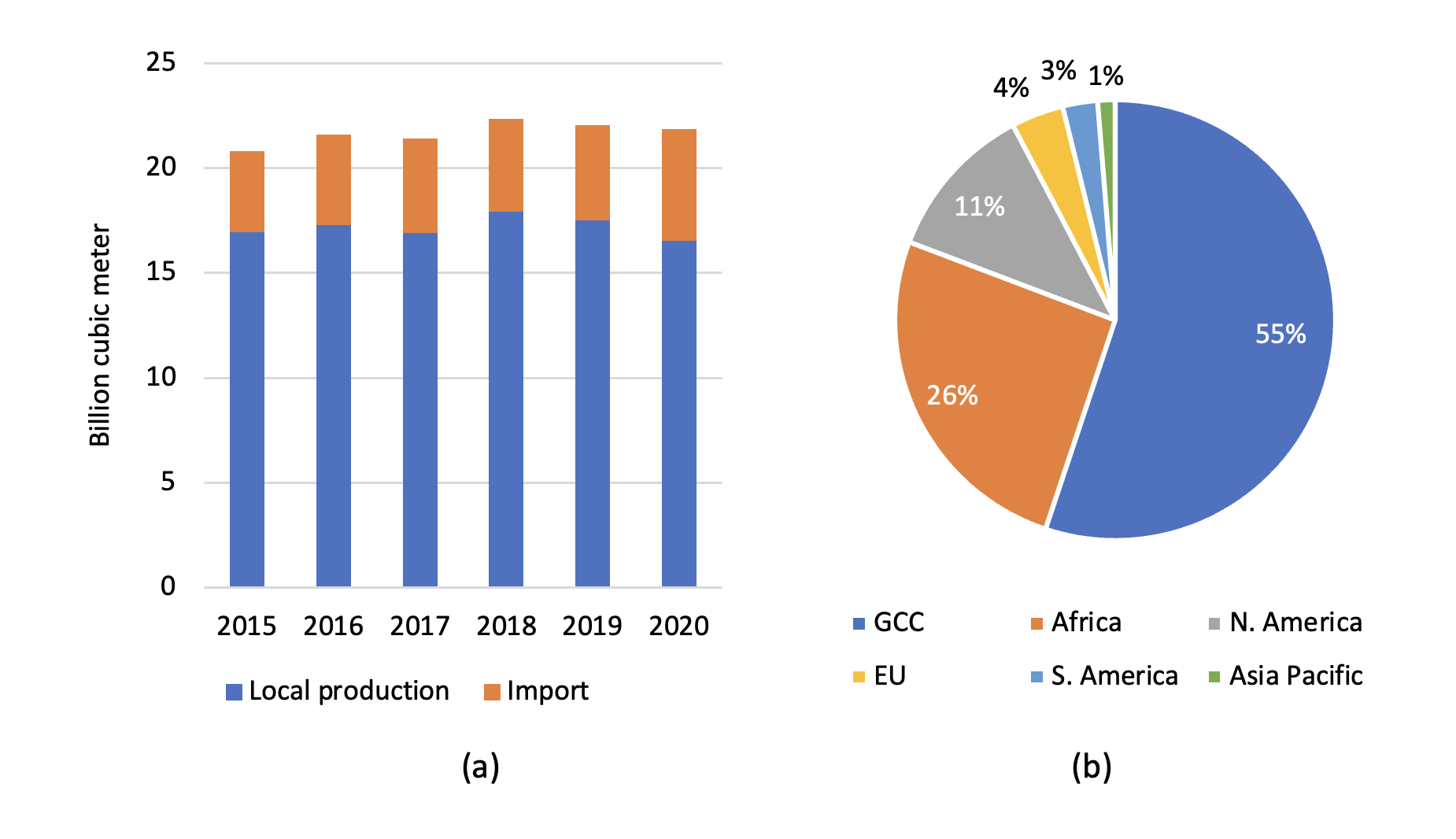
Given the rapidly growing local gas demand and the rising rate of gas imports, gas supply security is of great concern for Kuwait. Geopolitical and domestic conflicts and instability in countries that Kuwait depends on for its gas imports could jeopardize its gas supply. Occasional high gas price surges due to regional conflicts can also be a burden on the national fiscal account.
Furthermore, the ongoing Russia-Ukraine war has potential short- and long-term (post-war) effects on Kuwait’s gas supply stability. With Russia reducing and threatening to cut the gas supply to Europe completely, European nations are seeking new long-term gas supply sources, including from African nations. Despite Africa’s rich gas reserves, gas production capacity is relatively low due to its poor hydrocarbon infrastructure. Therefore, under pressure from Russia’s gas cuts to Europe, the African gas supply faces versed competition from net-importing nations, which could eventually affect Kuwait’s imported quota. Moreover, the gas supply from North America, i.e., the U.S., would ultimately be disturbed due to its political priorities in supporting European nations throughout this gas shortage period.
Though gas imports from Africa, North America, and other regions (beyond the GCC region) constitute about 9.0% of Kuwait’s local demand (45% of total imported gas), the geopolitical conflicts and tensions mentioned above highlight the importance of mitigating potential disturbances to Kuwait’s gas supply. Similarly, the gas supply from the GCC region (constituting 11.0% of Kuwait’s local demand) could face disruptions due to tensions between Iran and the GCC states on several issues, particularly Iran’s nuclear deal.
Kuwait’s Attempts to Secure Natural Gas Supply
Ventures for securing gas supply in Kuwait have been carried out on both the domestic and regional levels. Domestically, Kuwait Oil Company (KOC) has a strategic goal to increase its output of non-associated gas from domestic Jurassic reserves to 20.5 billion cubic meters by 2040.[4] Hence, it’s likely that the critical nature of Kuwait’s local gas supply shortage will continue for the next two decades until it’s able to reach its domestic gas production goal.
Recently, Kuwait Gulf Oil Company (KGOC) signed a memorandum of understanding (MOU) with Saudi Aramco Gulf Operations Company to develop the joint offshore Dorra gas field in the partitioned neutral zone. The MOU aims to review and finalize the engineering technical studies for the Dorra field project and establish a specialized technical team to execute the project. The Dorra field project development program’s goal is to produce 28.3 million cubic meters (1.0 billion cubic feet) of gas per day and 84,000 barrels of liquefied gas per day, to be divided equally between Kuwait and Saudi Arabia.[5] However, project development might face delays due to Iran’s objections to this agreement and its claims of sharing territorial offshore borders with the Dorra gas field (Figure 2). As a result, Kuwait will likely need to continue importing gas for the foreseeable future.
Figure 2 — The Geographic Location of the Dorra Gas Field
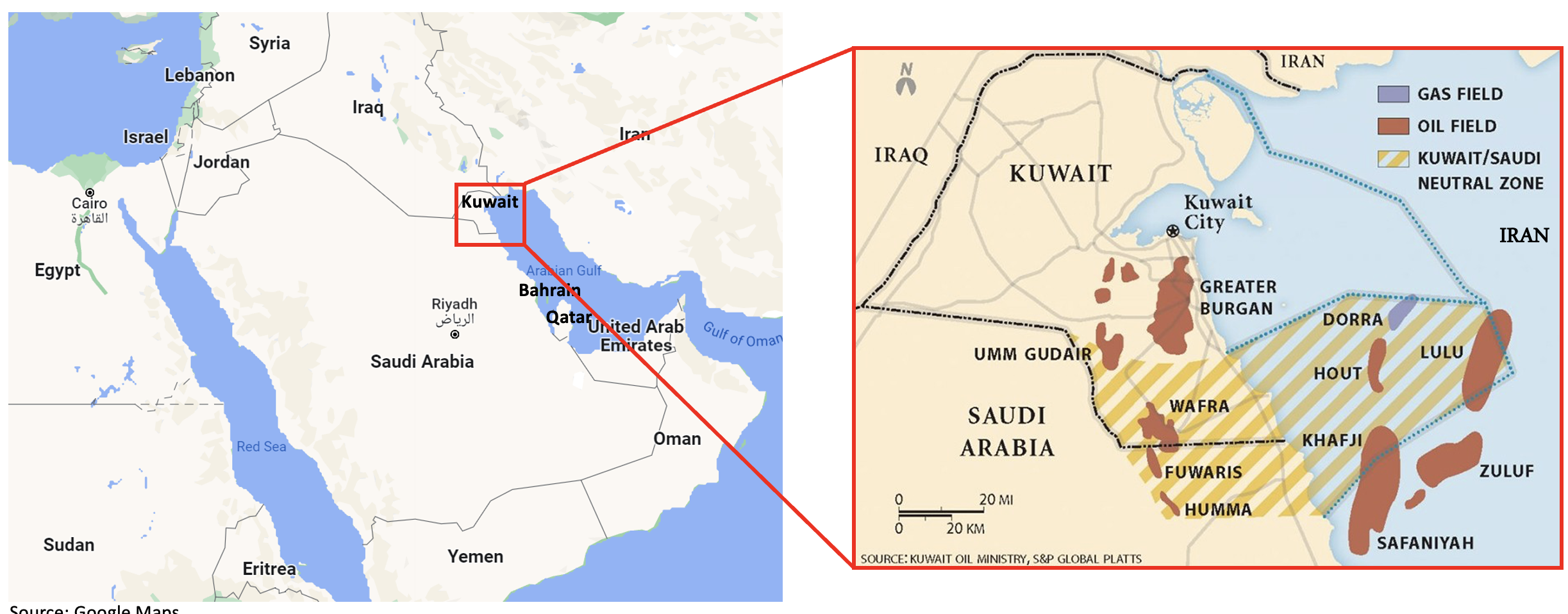
There have been several attempts to secure gas supply within the Gulf region. In 2000, an MOU was signed between Kuwait and Qatar to construct a 590-kilometer subsea gas pipeline that would transport 0.8 billion to 1.4 billion cubic feet a day of natural gas from Ras Laffan, Qatar, to Al-Zour in southern Kuwait.[6] The project was planned to be fully operational by 2005. However, Saudi Arabia did not approve the pipeline project through its waters due to a diplomatic quarrel between the Saudis and Qataris.[7] As a result, Kuwait has imported LNG from Qatar through alternative means.[8]
Within the Gulf region, gas deal negotiations between Kuwait and Iran were on and off between 2008 and 2015. A deal to export Iranian gas to Kuwait through Iraq and underwater Gulf pipelines would have exported 45.5 million cubic meters per day to Kuwait at the international market price. However, the cyclic tensions between GCC countries and Iran have stymied such a deal.[9]
In 2018, an agreement was prepared on importing gas from Iraq and developing shared border fields. The deal involved piped gas delivery from southern Iraqi fields to Kuwait with an initial supply of 1.4 million cubic meters per day, with volumes gradually rising to 5.7 million cubic meters per day. However, the gas agreement has been on hold over disagreements on the pricing of Iraqi gas.[10]
The above endeavors imply that Kuwait’s gas supply security is vulnerable to regional and global geopolitical tensions and conflicts for at least the next two decades. As a member of the GCC, Kuwait’s struggles with energy security affect the GCC as a whole — and will add additional barriers to achieving the GCC Charter goals.
GCC States’ Dependence on Energy-Intensive Seawater Desalination for Water Supply
Water scarcity occurs when water demand exceeds the available natural water supply. A country or a region is said to have water scarcity or poverty when the availability of natural renewable water (waterfalls, rivers, freshwater lakes, and aquifers) is below 1000 cubic meters per person per year.[11] Under this definition, all six GCC states are facing natural water poverty (Figure 3). The total of all GCC states’ available natural freshwater is 429 cubic meters per person per year. Iraq and Iran, in comparison, have 847 and 1485 cubic meters per person per year, respectively. Kuwait, however, is one of the world’s poorest countries in terms of access to renewable natural freshwater, with a volume of less than five cubic meters per person per year. Kuwait is therefore highly dependent on energy-intensive seawater desalination to meet its potable water demand.
More than 90% of the potable water in Kuwait comes from the unconventional practice of seawater desalination.[12] The power stations in Kuwait are cogeneration systems that produce electricity and heat. The heat is channeled to seawater distillation units, which are a mix of multi-stage flash (MSF) evaporation and multi-effect distillation (MED) technologies. In addition to the thermal MSF and MED systems, reverse osmosis (RO) technology is also used with low capacity. In 2021, the total installed capacity of the distillation units was 683.3 million imperial gallons per day, of which MSF and MED were 80% and RO was 20% of the capacity.[13] Freshwater consumption increased from 125.3 billion in 2010 to 153.5 billion imperial gallons in 2021 (Figure 4).[14] The fuel mix for thermal desalination constitutes oil, oil products and natural gas. In 2020, the fuel demand percentage for water production was at 22% for oil, 23% for oil products, and 55% for gas.[15]
Figure 3 — Renewable Natural Freshwater Resources Per Capita in GCC States
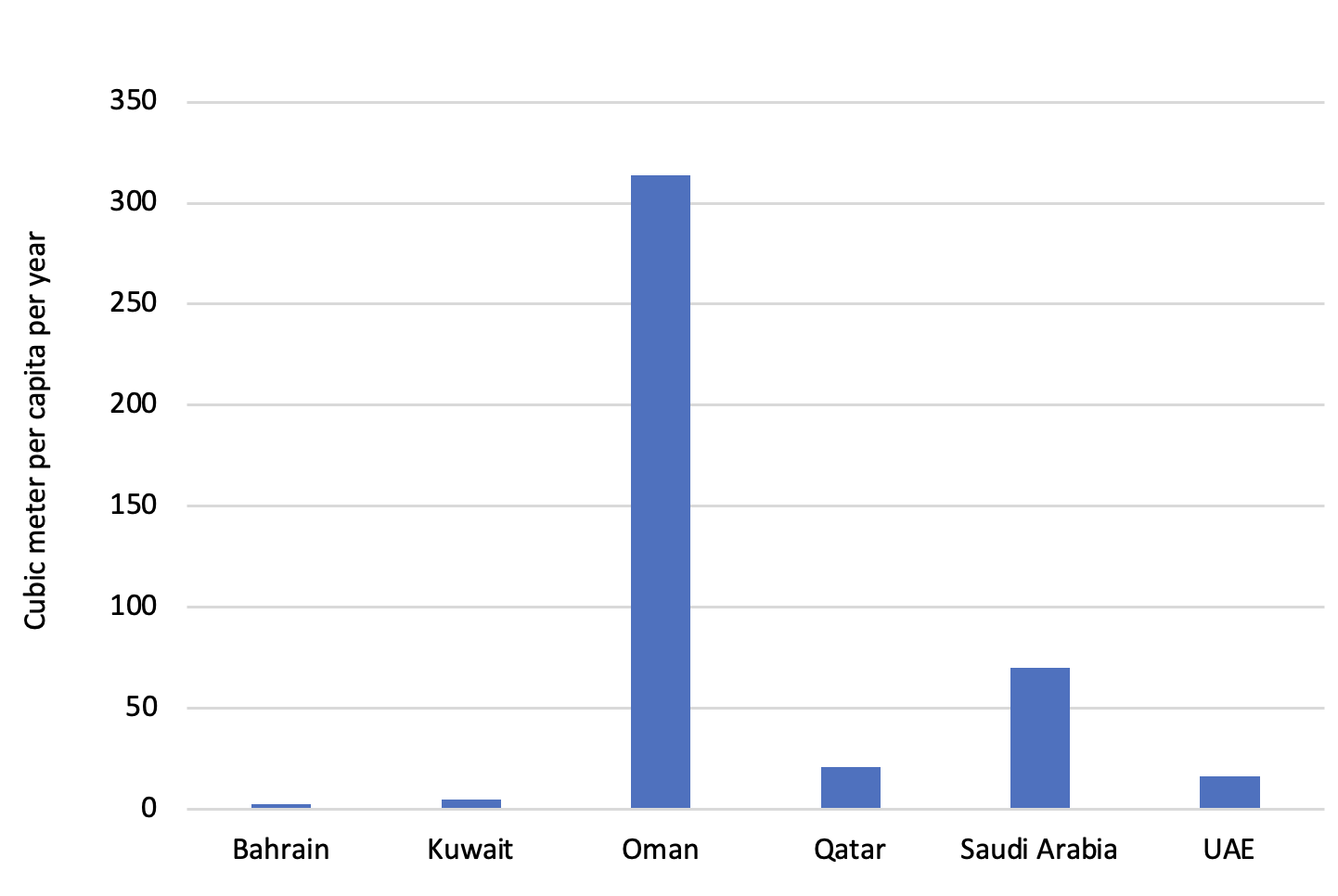
Figure 4 — Freshwater Production (Desalination) and Consumption in Kuwait
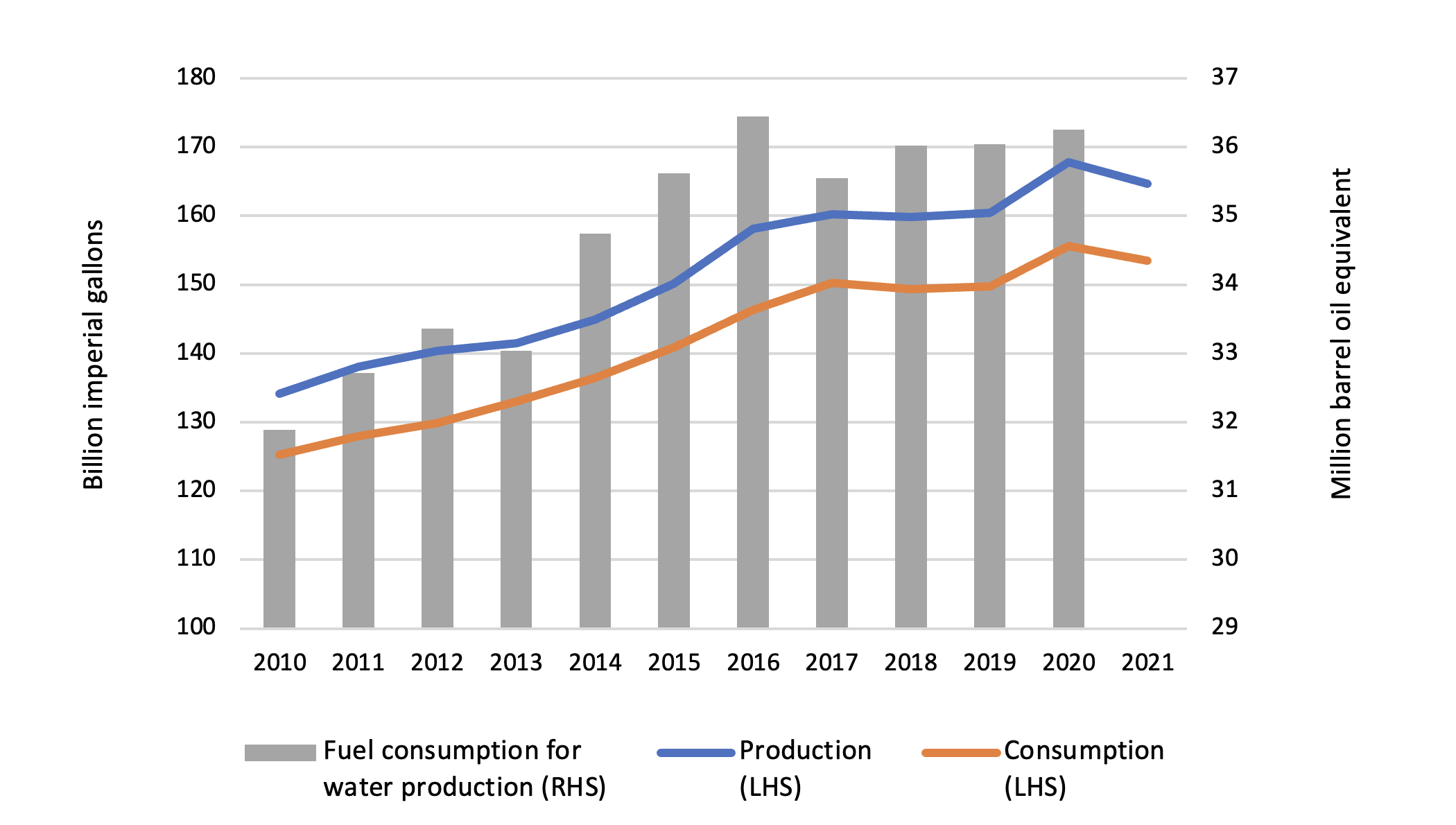
Given its location on the northern corner of the Gulf, Kuwait faces additional water challenges including a single access point to seawater from the northwest section of the Gulf and low seawater quality due to its turbidity, high salinity, and pollution. Unlike Saudi Arabia and Oman, for example — where there are alternative seawater interface options, including the Red Sea, the Gulf of Oman, and the Arabian Sea — Kuwait faces a serious water security threat. Additional concerns exist over radioactive fallout or leakage in the northern part of the Gulf, which would shut down all desalination units in Kuwait since they cannot filter out radioactively contaminated seawater. Alternative means of local seawater desalination have been explored by Kuwait and other GCC states.
Project Proposals for Water Cooperation in the Gulf
In the late 1970s, Iraq proposed a study to supply GCC states with freshwater from Shatt Al-Arab via a pipeline passing through Kuwait, Saudi Arabia, and Qatar to the UAE. However, there was no follow-up to execute the project due to regional tension (i.e., Iran’s 1979 Islamic Revolution). In the 1980s, Iraq proposed to supply Kuwait with fresh water from Shatt Al-Arab through a pipeline; however, Iran opposed the project proposal because Shatt Al-Arab borders its territories, and the project was later canceled due to Iraq’s invasion of Kuwait.[16] Similarly, Iran proposed to supply Kuwait with 200 million gallons per day of fresh water from the Karun River through a 550-kilometer land and subwater pipeline. However, negotiations between the Iranians and Kuwaitis have been stalled since 2006 due to political disagreements and tensions between the GCC states and Iran.[17]
In the late 1970s, Turkey proposed the “Peace Water” pipeline project to supply fresh water from the Sirdaryo and Gihon Rivers to the GCC states. The proposed project was to construct two pipelines. The first “west line” was planned to supply 3.5 million cubic meters per day of freshwater to Syria, Jordan, and western Saudi Arabia through a 2,700-kilometer pipeline. The second “east line” was supposed to provide 5.2 million cubic meters per day to Syria, Jordan, northern Saudi Arabia, Kuwait, and the rest of the GCC states.[18] Again, political unrest in the region prevented the project from being executed.
In the second GCC Consulting Meeting in Oman in 2000, the GCC leaders decided to carry out a water interconnection study. The water interconnection network would supply freshwater to all GCC states from desalination plants that would be constructed on the Gulf of Oman and the Arabian/Persian Gulf. A preliminary feasibility study was conducted, and in light of its results, a detailed study was executed in 2004. The proposed network would extend 1,324 kilometers, and the water desalination capacity production would be 275,000 cubic meters per day. Three desalination plants were proposed to be constructed in Sohar in the Gulf of Oman, Al-Sela in the UAE, and Al-Khafji in Saudi Arabia. The project cost was estimated to be U.S. $3.86 billion.[19] However, the project did not come to fruition, because most of the GCC countries were unconvinced of its feasibility at the time. The project surfaced again a decade later. In the 14th GCC Consulting Meeting in Riyadh in 2012, the GCC leaders decided to carry out an additional study taking into account the outcomes of previous studies. A consulting company was hired to execute the study,[20] but the project has been in stagnation without any tangible actions since 2013.
A recent development on the GCC water interconnection project was initiated through a virtual meeting, held in September 2021, between the GCC states’ energy ministers. The meeting discussed a proposal to establish a joint GCC authority to deal with issues related to water security, including the GCC water interconnection network, localization of the desalination industry, and alternative pathways to achieving water security for the GCC states.[21] In early 2022, Kuwait and Saudi Arabia discussed a proposal to study the possibility of a bilateral water connection between the two countries.[22] To date, there have not been any further developments on the GCC water cooperation issue.
The GCC’s Strategic Tri-Interconnections: Power, Gas, and Water
A tangible success of GCC energy-related integration is the power interconnection. The GCC states established the GCC Interconnection Authority (GCCIA) in 2001 with an authorized share capital of U.S. $1.1 billion. The primary objectives of the GCCIA are to link up the power grids of the six GCC states, operate and maintain the interconnection grid, and become the regulator of the region’s electricity trading market.[23] The interconnection grid has been fully functional since 2010. Figure 5 shows the configuration and some technical information about the grid. The interconnection grid has effectively provided emergency support during blackouts, shared spinning reserves to cover emergency operating conditions, saved costs of generation capacity required for power reserves, and provided means for energy trading to all member states (Table 1).[24] According to a recent GCCIA announcement, a new substation “AlWafra” will be constructed in southern Kuwait and commissioned by 2024. AlWafra will be the largest GCCIA transmission station with a capacity of more than 3,500 megawatts (MW). It will be the starting point for linking the Gulf network with the southern Iraq network.[25]
Figure 5 — GCC Interconnection Power Grid
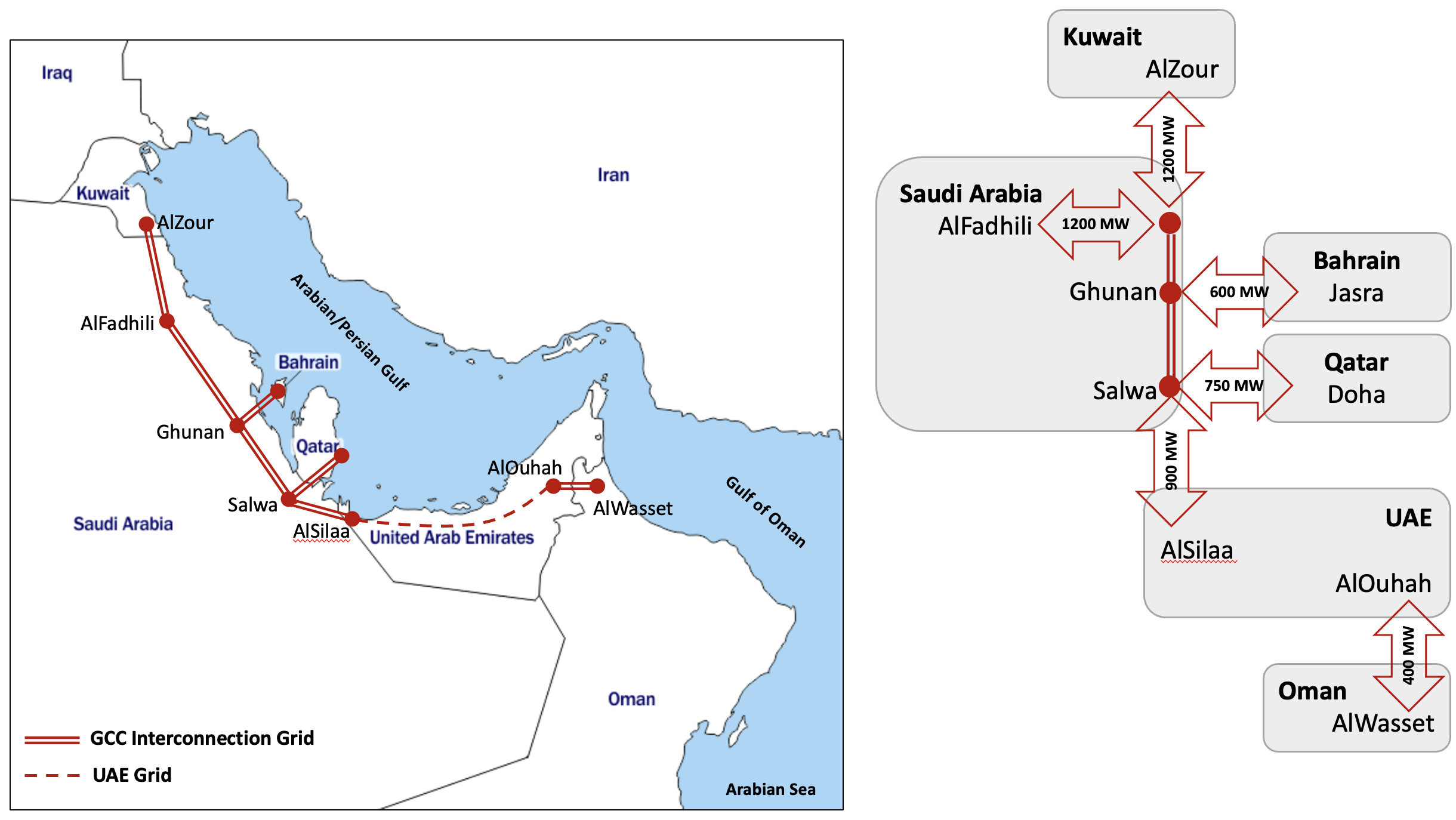
Table 1 — The Savings Achieved by the GCC Interconnection Grid for the Years 2020 and 2021

An analogous concept to the GCC interconnection power grid can be envisioned for gas and water interconnection networks in the region. Within the GCC, Qatar and Oman are net gas exporters with an average production of 175 billion and 37 billion cubic meters per annum, respectively.[26] Qatar exports 60% of its gas output as LNG, and it exports 10% of its gas production via the Dolphin pipeline to the UAE at 9% and Oman at 1%.[27] The Dolphin Project (Abu Dhabi state firm Mubadala 51%, Total 24.5%, Occidental 24.5%)[28] is the only significant intra-regional gas pipeline. Evidence shows that the economic gains from a cross-border gas pipeline (compared to LNG shipments) could reduce costs associated with energy transportation. Furthermore, it would encourage substituting oil/oil products with gas for domestic use (mainly in electricity and water production). The economic gains of gas pipeline transportation and as an oil substitute for domestic use in the GCC are estimated to reach U.S. $3.1 billion per annum.[29]
The third essential strategic interconnection is the GCC water network. The economic feasibility of such a network should be irrelevant since water is one of the fundamental elements of life and is crucial for national security. The northern GCC states, particularly Kuwait, are the most vulnerable to water supply challenges, especially with severe Gulf pollution and ongoing geopolitical conflicts. Likewise, the southern GCC states, specifically Oman, are vulnerable to natural disasters. In this century alone, Oman faced two tsunamis (in 2004 and 2013) due to earthquakes in the Indian Ocean and southwest Asia. The tsunamis devastated Oman’s coastal infrastructure and facilities. The existence of a GCC interconnected water network would be essential for consolidating the freshwater supply throughout the GCC states.
Conclusion and Policy Recommendations
The GCC Charter calls for coordination, integration and interconnection between member states to effectively overcome natural, economic, and geopolitical challenges. Yet, fundamental issues involving energy and water still persist, impacting the national security of member states, as well as the GCC as an entity. As a result, the GCC Charter’s goals have not been fully realized. Energy (particularly natural gas) and water security are still fragile in many GCC states. Hence, it is critical for the GCC states to work together to address their gas and water challenges.
By reviewing Kuwait’s gas and water supply security as a case study, this brief has shed light on the issues at hand. The region’s tri-interconnection networks — namely its power, gas and water networks — are the main pillars supporting the GCC’s energy and water security, and must be fortified.
The following three policy recommendations would consolidate and bolster the resilience and sustainability of GCC states’ energy and freshwater resources:
- Expedite the Development of a Gas Interconnection Grid. In 2019, there was an announcement by Saudi Arabia to establish an integrated gas grid with its neighboring GCC states.[30] To date, there has not been any information on the proposed project’s progress. Expediting the process of developing this regional gas grid is of high importance. Though Saudi Arabia and Kuwait are developing their local gas fields to meet their domestic demand, the proposed GCC gas interconnection network would provide high-value strategic benefits to the region as a whole, in addition to meeting local gas demand. It would provide flexibility for trading gas within the GCC, and excessive gas could be exported to international markets via various terminals located in the Arabian/Persian Gulf, the Gulf of Oman, and the Red Sea. Moreover, the proposed gas network could play a major role in supporting the envisioned hydrogen supply chain system in the region, and consequently, in supporting global and regional decarbonization goals.
- Establish a Water Interconnection Grid. Increased cooperation over seawater desalination, water treatment, water resources management, and water transmission across the region is needed for more sustainable and peaceful outcomes for GCC countries. Particularly, establishing a water transmission network across the Gulf states is a key survival strategy. Such a water network would make the region resilient to natural and human-caused disasters. Hence, the feasibility of a regional water grid should not be based purely on economic profit returns. Given its sole access point to the Gulf’s waters, Kuwait is the most exposed and affected GCC state to incidents and accidents in the Gulf. Kuwait should strongly persist in pursuing the establishment of the GCC water interconnection grid.
- Expand the Power Interconnection Grid. The existing GCC interconnection power grid has made tangible contributions to the stability and reliability of its states’ networks. The GCCIA continues to explore expanding its network beyond the GCC region and should further develop its network to be able to handle future variable renewable energy systems’ generation. GCC states have ambitious plans to include considerable renewable energy generation capacity in their inventories. The Arabian Peninsula is part of the solar sunbelt, which receives high solar irradiation levels — as much as 6.5 kWh/m² per day. Its average wind intensity across the region ranges between 5.5 and 9.5 meters per second.[31] The exploitation of renewable energy in the Gulf region would not only contribute to energy security, it would also support the GCC states’ near-zero carbon emissions plans.
Endnotes
[1] “GCC Achievements,” Secretariate General of the Gulf Cooperation Council, Kingdom of Riyadh, Saudi Arabia, accessed on December 24, 2022, https://www.gcc-sg.org/en-us/CooperationAndAchievements/Pages/Home.aspx.
[2] BP (British Petroleum), Statistical Review of World Energy 2022, 71st edition, London, UK, 2022, https://www.bp.com/content/dam/bp/business-sites/en/global/corporate/pdfs/energy-economics/statistical-review/bp-stats-review-2022-full-report.pdf.
[3] Osamah Alsayegh and Bassam Fattouh, “Present and Future Role of Natural Gas in Kuwait,” in The Future of Gas in the Gulf: Continuity and Change, ed. Jonathan Stern (Oxford: The Oxford Institute for Energy Research, University of Oxford, 2019).
[4] “Kuwait, Saudi Arabia sign MoU on Durra gas field,” Kuwait News Agency (KUNA), December 11, 2022, https://www.kuna.net.kw/ArticleDetails.aspx?id=3072234#.
[5] Ibid.
[6] “Qatar-Kuwait pipeline takes shape,” MEED, Middle East Business Intelligence, January 18, 2002, https://www.meed.com/qatar-kuwait-pipeline-takes-shape/.
[7] Jyotsna Ravishankar, “Saudi Arabia refuses to budge on Qatar-Kuwait pipeline deal,” Arabian Business, March 2, 2006, https://www.arabianbusiness.com/abnews/saudi-arabia-refuses-budge-on-qatar-kuwait-pipeline-deal-63485.
[8] “Kuwait signs LNG import deal with Qatargas,” Arabian Business, April 28, 2014, https://www.arabianbusiness.com/gcc/kuwait-signs-lng-import-deal-with-qatargas-548112.
[9] “Iran agrees on Kuwait gas export deal,” MEED, Middle East Business Intelligence, October 10 2008, https://www.meed.com/iran-agrees-kuwait-gas-export-deal/; “Kuwait negotiating with Iran for natural gas buy,” Arab Times, November 10, 2015, https://www.arabtimesonline.com/news/kuwait-negotiating-with-iran-for-natural-gas-buy/.
[10] “Renewed push for Iraqi-Kuwaiti gas supply deal,” The Arab Weekly, August 31, 2019, https://thearabweekly.com/renewed-push-iraqi-kuwaiti-gas-supply-deal.
[11] Usha Kumari, et al., “Global water challenge and future perspective,” in Green Technologies for the Defluoridation of Water, (2021): Chapter 8, 197-212, https://doi.org/10.1016/B978-0-323-85768-0.00002-6.
[12] A. Akber and A.Mukhopadhyay, “An overview of Kuwait’s water resources and a proposed plan to prevent the spread of the Novel Corona Virus (COVID-19) pandemic through Kuwait’s water supply facilities and groundwater system,” in Environmental Resilience and Transformation in Times of COVID-19, (2021): Chapter 7, 79-88, https://doi.org/10.1016/B978-0-323-85512-9.00005-X.
[13] “Statistical Year Book 2021 – Water, Ministry of Electricity, Water and Renewable Energy,” Kuwait, 2022.
[14] “Data and Statistics,” IEA (International Energy Agency), Paris, France, https://www.iea.org/data-and-statistics.
[15] Ibid.
[16] M. Eid. “Water and security in the Arabian Gulf - A challenging strategic relation,” Strategic Report no. 16 (in Arabic), Center for Gulf and Arabian Peninsula Studies, Kuwait, 2021.
[17] Ibid.
[18] Ibid.
[19] “Water interconnection project between the GCC Countries,” Report (in Arabic), Saudi Press Agency, December 12, 2006, https://www.spa.gov.sa/410590#.
[20] “Water Interconnection Project,” Secretariate General of the Gulf Cooperation Council, Riyadh, Kingdom of Saudi Arabia, 2013, http://bit.ly/3XS0ZUf.
[21] “Kuwait raised it again - Where did the GCC water interconnection project reach?” Report (in Arabic), AlKhaleej Online, March 29, 2022, http://khaleej.online/y3KXbz.
[22] Adnan I. Al-Mohaisen, “Gulf Cooperation Council Interconnection Authority - Status and Development,” Gulf Cooperation Council Interconnection Authority, Dammam, Kingdom Saudi Arabia, 2005, https://www.gccia.com.sa/Data/PressRelease/Press_4.pdf.
[23] Ibid.
[24] “Annual Report 2021,” Gulf Cooperation Council Interconnection Authority, Dammam, Kingdom Saudi Arabia, 2021.
[25] “Kuwait Foreign Minister: AlWafra station is one of the elements of the GCCIA network, and will serve southern Iraq, in compliance with the principle of cooperation,” Kuwait News Agency, December 22, 2022, https://www.kuna.net.kw/ArticleDetails.aspx?id=3074524.
[26]Alsayegh and Fattouh, “Present and Future Role of Natural Gas in Kuwait.”
[27] Carole Nakhle, “Qatar builds up its gas muscle,” Energy, Geopolitical Intelligence Services, Liechtenstein, June 6, 2019, https://www.gisreportsonline.com/r/qatar-gas-production/.
[28] Jamie Ingram, “GCC Gas Integration: More Than Just A Pipe Dream?” MEES (Middle East Economic Survey), January 25, 2019, https://www.mees.com/2019/1/25/oil-gas/gcc-gas-integration-more-than-just-a-pipe-dream/ea83b090-20b9-11e9-9722-6b11aace7fc1.
[29] Bertrand Rioux, Rami Shabaneh, and Steven Griffiths, “An economic analysis of gas pipeline trade cooperation in the GCC,” Energy Policy 157 (2021), https://doi.org/10.1016/j.enpol.2021.112449.
[30] Ibid.
[31] “Renewable Energy in the Arab Region,” International Renewable Energy Agency (IRENA), Abu Dhabi, UAE, 2016.
This material may be quoted or reproduced without prior permission, provided appropriate credit is given to the author and Rice University’s Baker Institute for Public Policy. The views expressed herein are those of the individual author(s), and do not necessarily represent the views of Rice University’s Baker Institute for Public Policy.



